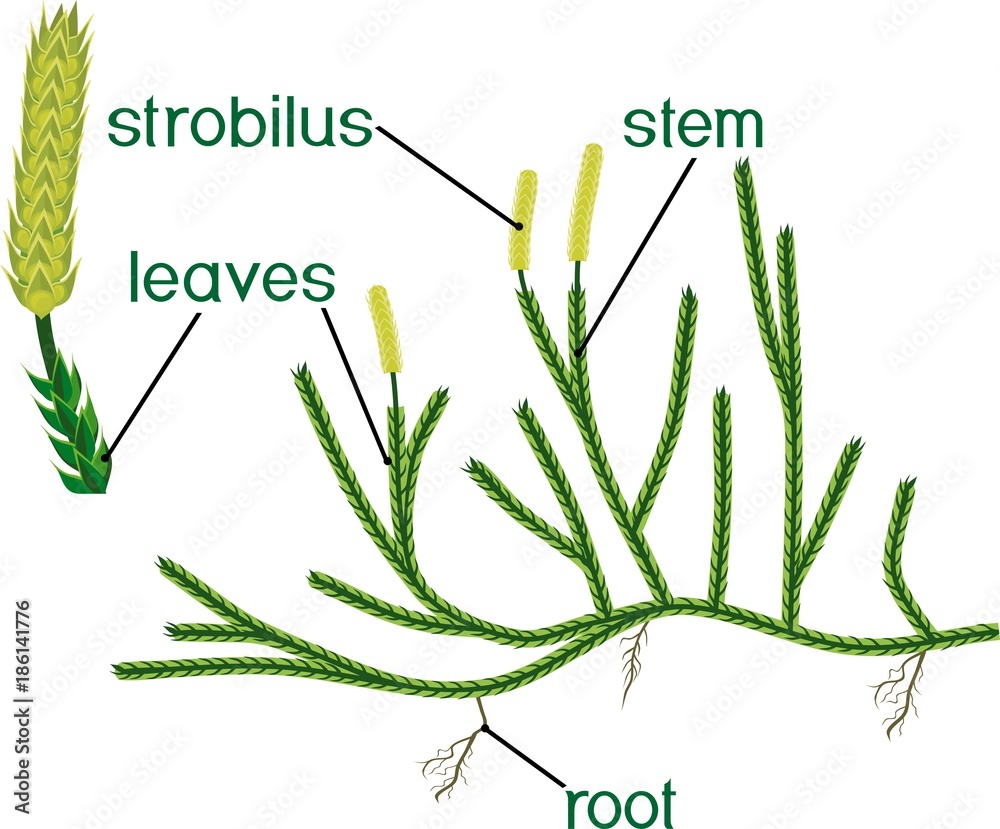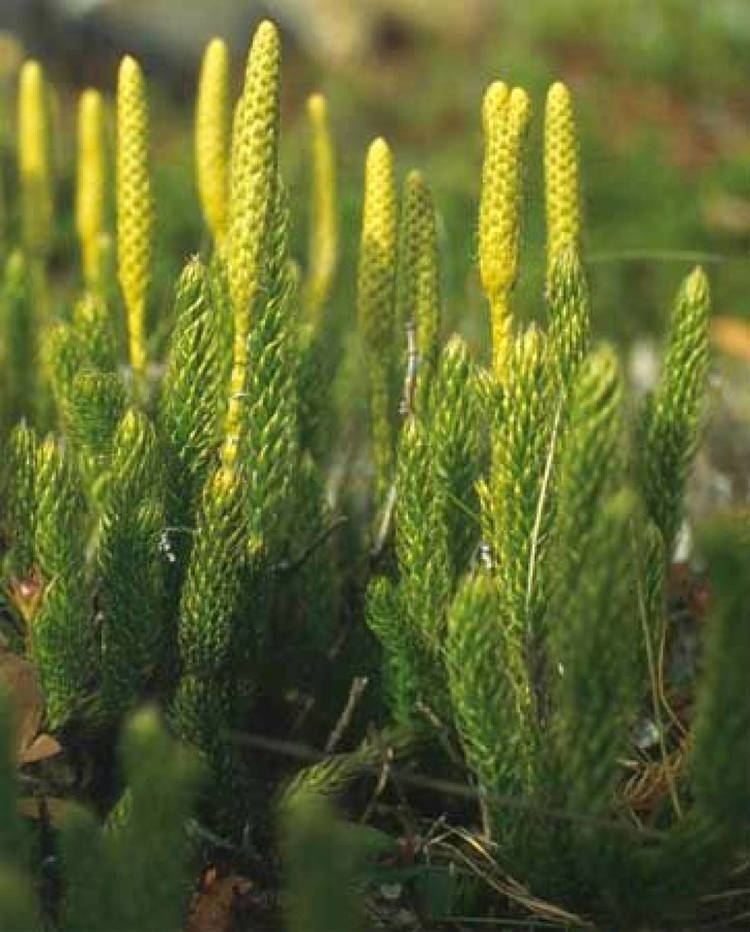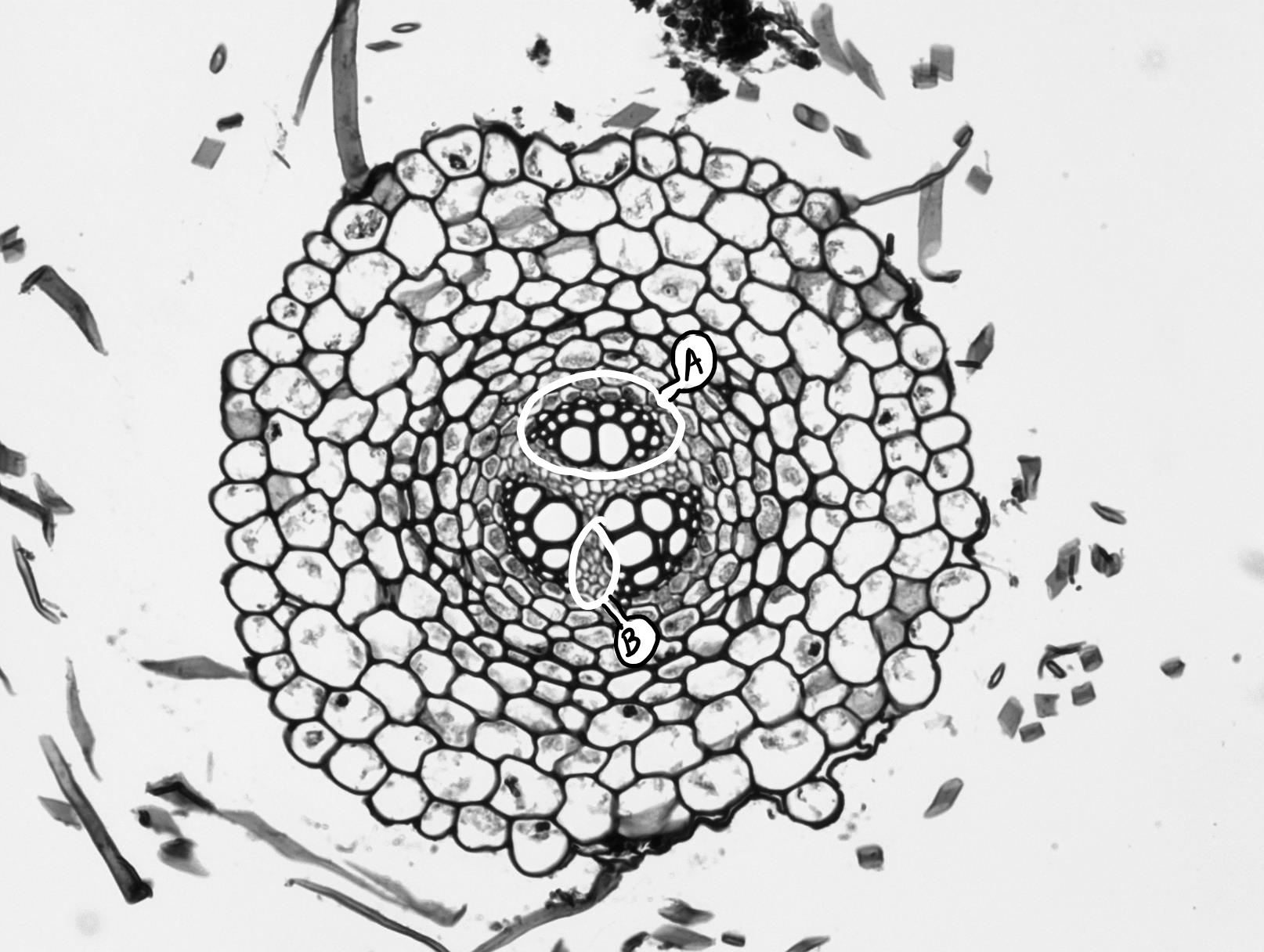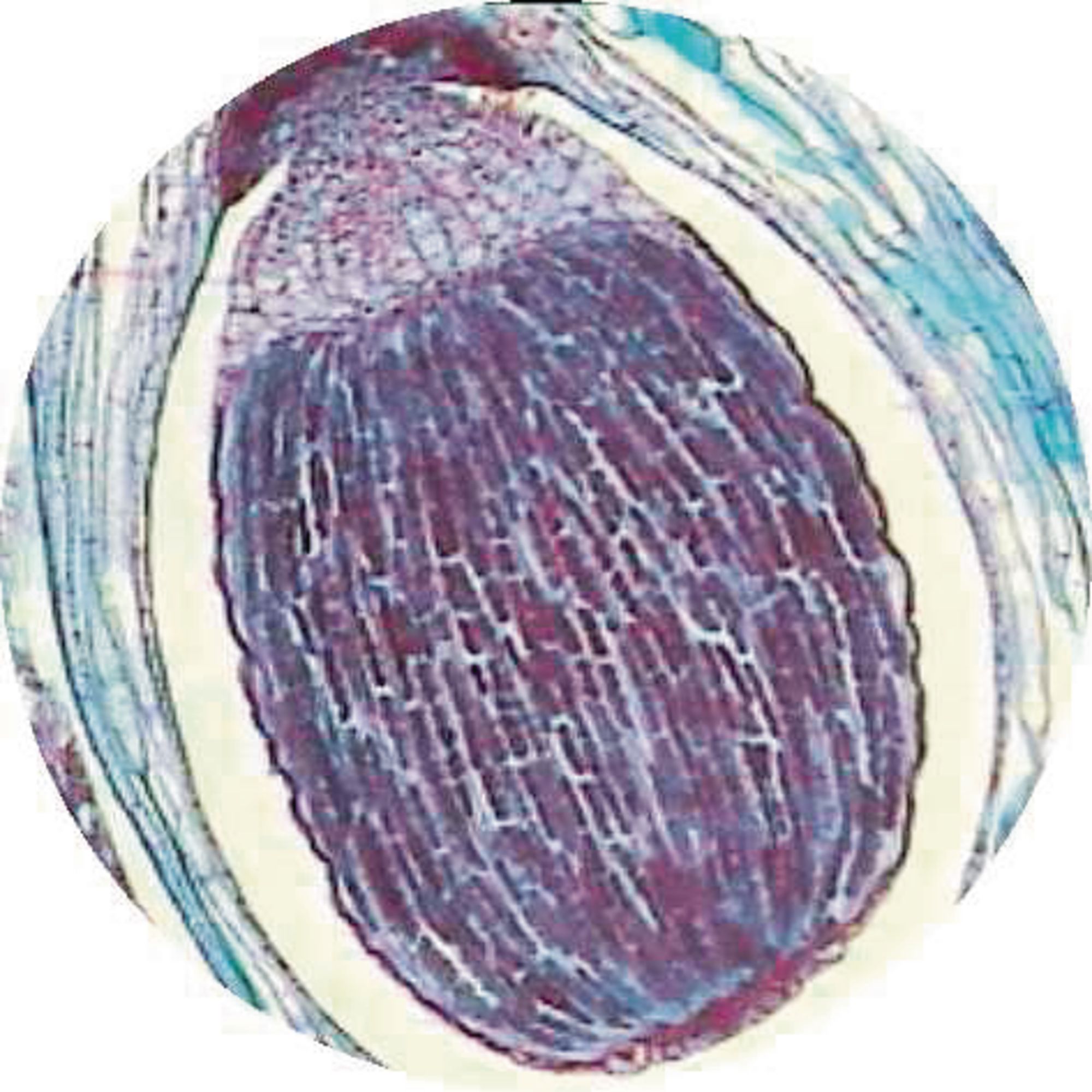
Parts of plant. Structure of Clubmoss or Lycopodium (Running clubmoss or Lycopodium clavatum
1. Plant body is sporophytic and the sporophyte is divisible into roots, stem and leaves (Fig. 224). 2. The genus is divisible into two subgenera, i.e., Urostachya and Rhopalostachya.

Clubmoss (lycopodium Sp.) Stem Photograph by Marek Mis/science Photo Library
Lycopodium (from Greek lykos, wolf and podion, diminutive of pous, foot) [2] is a genus of clubmosses, also known as ground pines or creeping cedars, [3] in the family Lycopodiaceae. Two very different circumscriptions of the genus are in use.

LYCOPODIUM CLASSIFICATION, STRUCTURE OF SPOROPHYTE, REPRODUCTION, STRUCTURE OF GAMETOPHYTE AND
Observe fresh specimens and prepared slides of Selaginella and/or Lycopodium. Draw and describe the important characteristics that differentiate these plants from bryophytes, including stem and leaf structure, below ground parts, and where spores are produced. Figure \(\PageIndex{1}\): Lycopodium clavatum.

Lycopodium Alchetron, The Free Social Encyclopedia
Lycopodium is homosporous and the spores are produced within large, short-stalked, reniform to somewhat sub-globose sporangia, borne singly either in the axils or on the stem, a little above the sporophylls.

LYCOPODIUM CLASSIFICATION, STRUCTURE OF SPOROPHYTE, REPRODUCTION, STRUCTURE OF GAMETOPHYTE AND
The Epidermis of the stem typically has Stomata. The outer Cortex usually contains Chlorenchyma. This photosynthetic tissue may contain a lot of air spaces & can be continuous with the leaves. The take home message is that the stems can make a major contribution to the total amount of photosynthesis that takes place in Lycopodium.

botany microscope prepared slides Stem of Lycopodium T.S.(show dicyostele) with low price and
Anatomy of Stem Anatomy of Root Anatomy of Leaf Lycopodium: Internal and External Structure Systematic Position Division- Pteridophyta Class- Lycopsida Order- Lycopodiales Family- Lycopodiacelae Genus- Lycopodium Distribution and Habitats

Lycopodium obscurum or L. hickeyi (Pennsylvania clubmoss, … Flickr
In this article we will discuss about the structure of Lycopodium with the help of diagrams. The main plant body is sporophytic. It consists of slender and branched stem, numerous small leaves (microphylls) and dichotomously- branched roots (Fig. 7.23A, B). Roots: The primary root or first formed root of the young sporophyte is ephemeral, short-lived. The older plants have dichotomously.

6.1.1 Lycopodium Biology LibreTexts
In this article we will discuss about the anatomy of lycopodium. Also study the strobilus, arrangement of sporangia, L.S. strobilus and spores of lycopodium. Cut thin transverse sections of stem, leaf and root by inserting the material in pith, stain in safranin- fast green combination, mount in glycerine and study- under microscope.

6.1.1 Lycopodium Biology LibreTexts
This is a diagram of a section through the node (where the leaf emerges from the stem). The space in the siphonostele is called a leaf gap. It represents where vascular tissue has branched off into the leaf. (b) Dictyostele= with large, overlapping leaf gaps which dissect the vascular system into a network.

LYCOPODIUM CLASSIFICATION, STRUCTURE OF SPOROPHYTE, REPRODUCTION, STRUCTURE OF GAMETOPHYTE AND
Lycopodium cernuum Strobili. Plant body is the sporophyte. Differentiated into root, stem and leaves. Considering the variation in habit of different species, Pritzel (1900) divided the genus Lycopodium into two sub-genera: Urostachya. Rhopalostachya. Erect or pendant stem. Stem-Dichotomously branched. Roots arise only from base of stem.

Lycopodium obscurum longitudinal section of strobilus UWDC UWMadison Libraries
the epidermis (an outermost, protective layer), the vascular cylinder (center for stem support and transport of water, sugars, and nutrients), and the ground tissue, usually parenchyma cells (for storage, including a cortex outside the vascular cylinder and sometimes a pith inside the vascular cylinder). 1. A Lycopodium stem

LYCOPODIUM CLASSIFICATION, STRUCTURE OF SPOROPHYTE, REPRODUCTION, STRUCTURE OF GAMETOPHYTE AND
Lycophyte sporangia are stalked and kidney-shaped, as in the zosterophyllophytes. In the earliest lycophyte groups, such as the Asteroxylales, the sporangia are oriented across the leaf, so that the widest dimension of the sporangium is perpendicular to the axis of the leaf.

Lycopodium, stem, transverse section, stele
Lycopodium clavatum (Fig. 538A) is a temperate to sub- tropical, terrestrial species very common on the Indian hills, specially the Himalayas. The sporophyte has a weak, prostrate stem trailing along the surface and rooted down with adventitious roots growing anywhere on the lower surface.

Lycopodium T.S. Stem. B8A10984 Philip Harris
In this article we will discuss about the anatomy of lycopodium. Also study the strobilus, arrangement of sporangia, L.S. strobilus and spores of lycopodium. Cut thin transverse sections of stem, leaf and root by inserting the material in pith, stain in safranin- fast green combination, mount in glycerine and study- under microscope. Stem: 1. Internally, the stem (Fig. 227) consists of a.

Lycopodium stem (Anatomy) YouTube
ADVERTISEMENTS: In this article we will discuss about the structure of Lycopodium with the help of diagrams. The main plant body is sporophytic. It consists of slender and branched stem, numerous small leaves (microphylls) and dichotomously- branched roots (Fig. 7.23A, B). Roots: ADVERTISEMENTS: The primary root or first formed root of the young sporophyte is […]

Whole plant illustrated
2. Cortex: 3 layers in L.cerenuum 3. Outer and inner cortex is parenchymatous and middle cortex is sclerenchymatous 4. Endodermis: single layered, often with casparian thickening 5. Pericycle: One to many layered made up of parenchymatous cells 6. Stele: basically protostele Varies in different species: